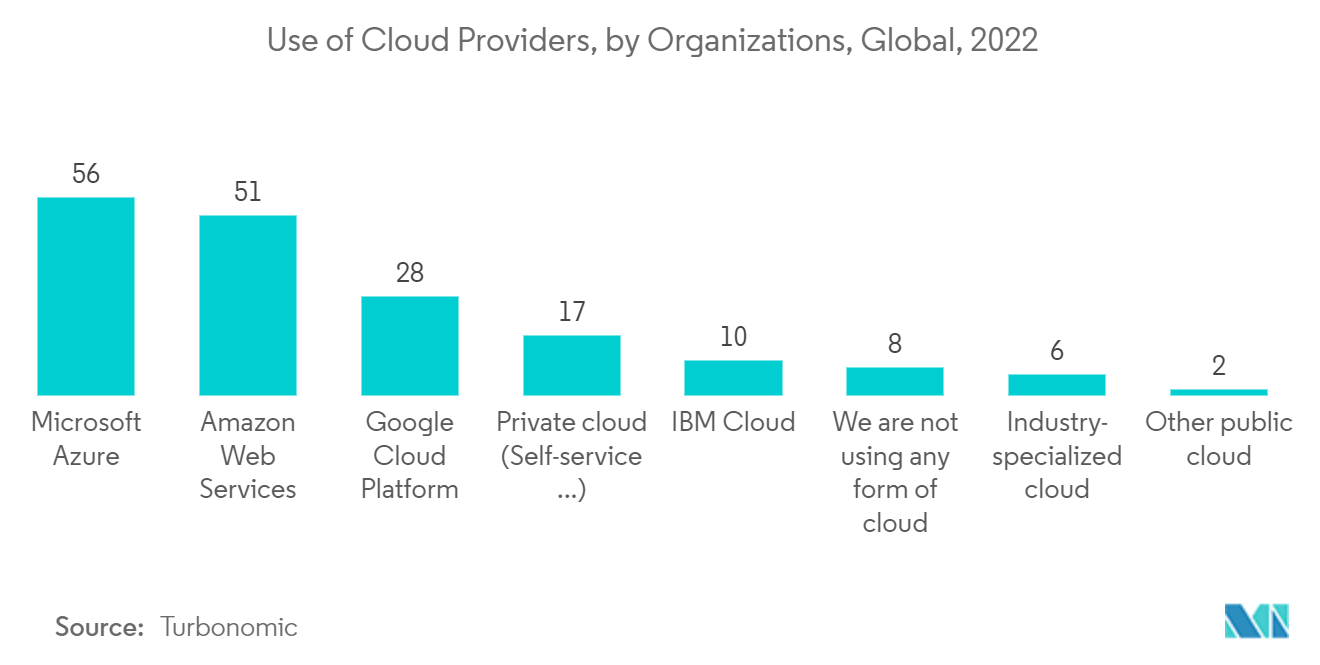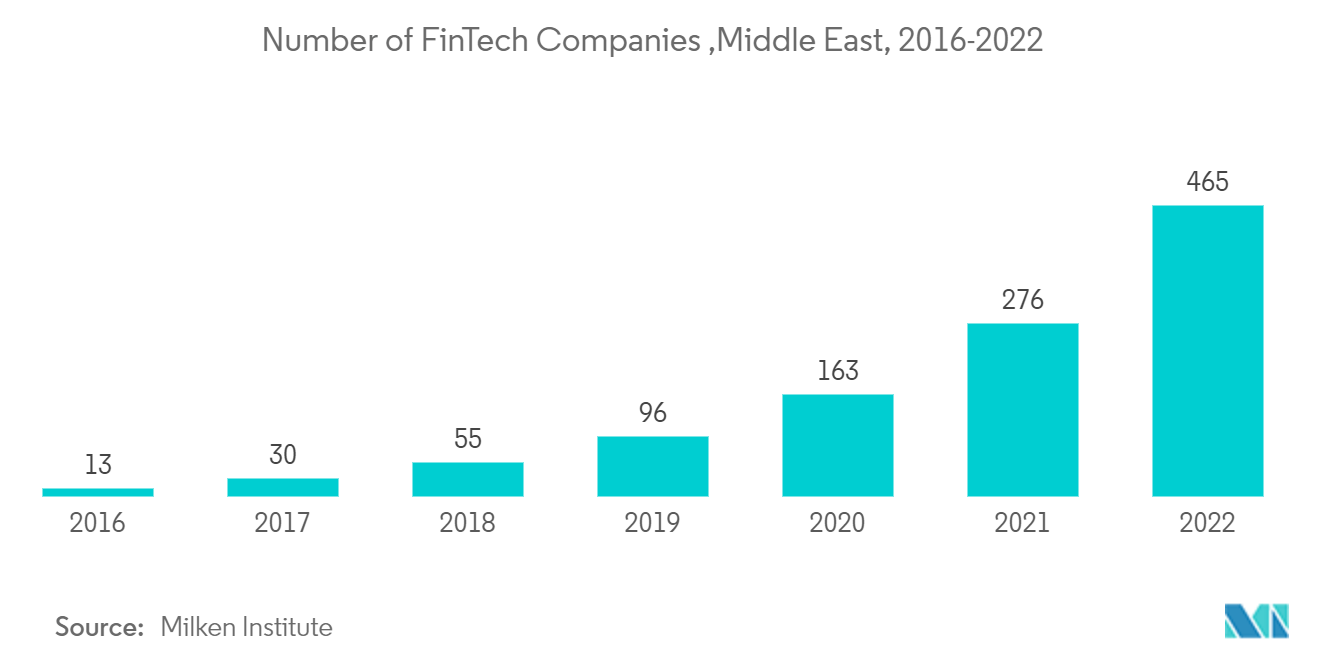Market Trends of MEA Cybersecurity Industry
Cloud Segment is expected to grow at a higher pace.
- The increasing use of cloud-based managed security services has even simplified the adoption of cybersecurity practices for Middle Eastern enterprises. Cloud security refers to the technologies, policies, controls, and services that protect cloud data, applications, and infrastructure from threats. Cloud security stands out from the legacy as a modernized cyber security solution. IT models include scaling speeds, data storage, end-user system interfacing, and proximity to other networked data and systems.
- Cloud computing has transformed how enterprises use, share, and store data, applications, and workloads. However, it has also introduced a host of new security threats and challenges. Significant data going into the cloud and public cloud services increases the exposure. The cloud market in UAE is still in the early stages, with the implementation of private laaS viewed as a critical first step towards broader cloud adoption. The opening of cloud data centers in the region is likely to boost cloud adoption, which would drive the demand for cloud security. Also, initiatives by the countries in the region to move towards a cloud computing future are poised to propel the demand for cloud security.
- To tap the market opportunities, vendors in MEA need to innovate cloud-based solutions. They also want to build global data centers to strengthen cloud resilience, meet data privacy regulations, and engage with the public cloud (AWS, Azure) for higher scalability.For instance, Bahrain Economic Development Board (EDB) signed a Memorandum of Understanding (MoU) with Tencent Cloud, the cloud computing subsidiary of the multinational Chinese tech firm, to drive the Kingdom of Bahrain's IDC development and support its rapid emergence as the MENA region's hub for the cloud and IDC sectors by opening an Internet Data Centre (IDC) in the country. Establishing such public cloud infrastructures is expected to drive the demand for cloud-based solutions in the MENA region.
- However, Africa still needs to catch up to the deployment of cloud solutions as compared to the Middle Eastern region. Piracy is still a big hurdle as many businesses use legacy on-prem versions of pirated software. However, this exposes the company to multiple threats. With security threats across the region increasing in frequency and sophistication, vendors in the area are offering Cloud UTM that provides organizations with around-the-clock protection and the cloud's scalability. It eliminates the complexity of managing on-premise firewalls and delivers superior identification and threat management. For instance, recently, du, from Emirates Integrated Telecommunications Company (EITC), has launched its Cloud Unified Threat Management (UTM) service, a cybersecurity solution that extends organizations' perimeters to all sites securely.
- According to Turbonomic, in 2021, 56 % of respondents said they use Microsoft Azure for cloud services. Amazon Web Services (AWS) topped the ranking until 2020 when Microsoft surpassed it. Furthermore, the percentage of respondents who do not use any cloud increased from 4% in 2021 to 8% in the last year.

BFSI is Expected to Drive the Market
- The Middle Eastern and African region is undergoing digital transformations from a broader economic development context and within the banking sector. Before COVID-19, BFSI digitalization rates in the area were low; however, as the threat and uncertainty from COVID-19 settled in, the financial services industry is started adopting digitization at a rapid pace and utilizing technologies such as cloud, artificial intelligence (AI), to meet rising customer expectations to remain competitive.
- The UAE Banks Federation (UBF), a professional body representing 49 banks as members in 2021, announced that it is launching a new initiative to combat all future cyber threats. As a part of this initiative, all the member banks will have to seamlessly collect, analyze and share data on cyber threats while allowing anonymous reporting and alert management. The initiative will enable financial institutions to gain an encompassing perceptive of the ongoing cyber threat landscape. It will allow them to better prepare and respond to all emergent threats.
- The National Bank of Fujairah (NBF) has built a robust cybersecurity strategy focusing on three main pillars: identity protection, data protection, and culture. Moreover, as part of the bank's cyber resiliency program, it conducts various types of cyberattack simulations like the Red Team exercise, Tabletop Cyber Attack Simulations, and Phishing simulations, among others, to measure our cyber resiliency capabilities with the help of specialists.
- According to AFDB, this ACRC project has the potential to benefit over 250 million vulnerable clients and over 2,000 financial institutions across the region. Moreover, as part of its gender promotion policy, ACRC will specifically target improving cybersecurity for 20 to 25 million women in five years and will aim to employ a workforce of at least 39% of women. Investments in the awareness of cybercrime in the BFSI sector in the region are expected to drive the development of solutions offered during the forecasted period.
- According to Milken Institute, in the Middle East area, the number of financial technology (FinTech) enterprises is predicted to grow to 465 by 2022. There were just 30 fintech companies in the region in 2017. The gradual growth of fintech firms in the region creates an opportunity for the local and international players to develop new solutions to capture the market share.


